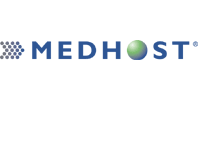Resource:
Leveraging Streamlined Patient Flow to Improve Care Delivery and Financial Health
Learn how technology and process improvements yield material impact to the bottom line.
Combining new technology with consultative process improvements deliver the deepest positive impact to patient flow. Real-time visibility, strong leadership and a significant culture change demonstrate how one hospital improved patient care and quality outcomes while decreasing length-of-stay and containing costs. The result? Material impact to its bottom line.
Since 2005, The Joint Commission has set standards for patient flow to “prevent crowding and boarding of patients in the emergency department (ED) and in other temporary locations.” The standards were amended in January 2013, with hospitals needing to comply with two elements of performance beginning January 1, 2014: Hospitals must measure and set goals for mitigating and managing the boarding of ED patients within a recommended four-hour window, and hospitals must address the boarding risk for behavioral health emergencies. Specifically, hospitals must communicate with behavioral health providers to improve care coordination.
While these evolving standards are designed to improve care coordination and patient safety, hospitals are discovering that patient flow, with its impact on admissions and resource allocation, also has critical financial implications. With reimbursements continuing to shrink, hospitals must look for opportunities to increase operational efficiencies and reduce cost. “A focused patient-flow initiative can drive positive results in various areas,” said Barbara Bryan, vice president of Consulting for MEDHOST, provider of market-leading enterprise, departmental and healthcare engagement solutions to more than 1,000 hospitals. By implementing a patient-flow initiative, hospitals can efficiently achieve multiple goals – improve patient safety and care coordination, decrease financial risk while improving financial health, and comply with The Joint Commission standards. In addition, with patient flow directly related to staff, patient and family satisfaction, such an initiative can increase stakeholder satisfaction.
Process, technology and metrics
For patient flow, combining technology with focused process-improvement initiatives will deliver the greatest results. While technology can provide data transparency to sustain results, “you have to look at the process and improve the process itself,” Bryan said. These initiatives more often than not involve culture change. One of the biggest challenges for hospital executives regarding patient-flow improvement is that it touches so many people in the organization. “Communication and how communication flows around patient flow is key to create efficiencies,” she said. Therefore, hospitals need to develop a communication structure that reaches across the organization to help drive culture change.
Hospitals must also develop performance indicators to help them determine whether they are moving in the right direction. “If you can’t measure it, you can’t manage it,” Bryan asserted. Once hospitals identify their greatest areas of opportunity, they need to establish metrics and implement a system that aggregates real-time data around patient flow and drives transparency throughout the organization. An executive dashboard presenting financial, quality and patient-flow information, for example, can help leadership make proactive decisions versus retrospective decisions based on end-of-the-month reports.
Read the full whitepaper to learn more.
